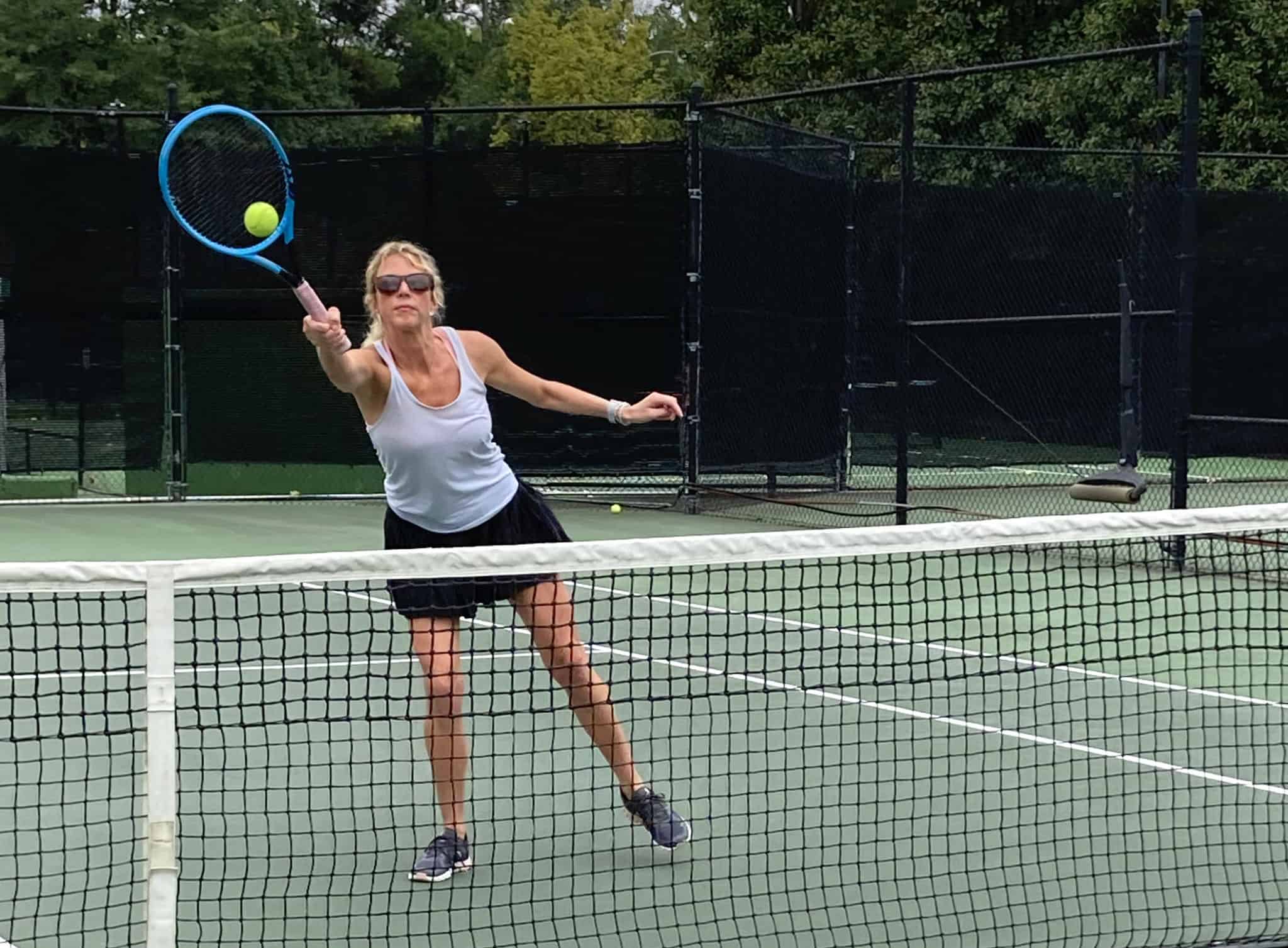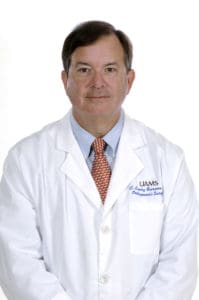Hip Replacement at 30 Spurs New Mom to Adopt Active Lifestyle
| When Jessica Steadman of Little Rock was told she’d need a double hip replacement at age 30, it felt like the end of the world. Seven years after surgery, not only is she thriving, but the experience taught her to appreciate and protect her health.
Her hip pain came on suddenly in 2012 after the birth of her first son. Steadman remembers the sadness of not being able to pick up her baby and the difficulty of coming to terms with the fact that physical therapy wasn’t working. An MRI revealed there was no other option but surgery.
C. Lowry Barnes, M.D., orthopaedic surgeon and chair of the Department of Orthopedic Surgery at UAMS, broke the news that her left hip was totally collapsed and the right wasn’t far behind.
“I really did think I would never be able to live a normal life,” Steadman said. “I was coming from the perspective of a newlywed and a new mom. We were just getting started building a life together and then I discovered I have this incredibly rare condition and need a hip replacement, probably two. I just thought I would never be able to do anything active again. I remember Dr. Barnes saying, ‘You know, this pain right now is not going to be your life forever. This is not going to define you. This is not the end of your life, it’s just the beginning.’ I thought that sounded really corny at the time, but eventually, you know, he was right.”
Steadman was diagnosed with something called avascular necrosis, meaning the bone tissue in her hips had died from lack of blood supply. The condition is rare, with fewer than 200,000 cases in the U.S. each year. None of the typical causes made much sense in Steadman’s case. It felt unexplained and random.
The diagnosis was a hard pill to swallow. Steadman had the left hip replaced in January 2013. Within months, it was clear the right needed to be replaced too. She went through that surgery in August.
Steadman had to use a walker. She was the youngest person in the room in physical therapy, and while she talked to other people who bounced back quickly, her recovery was painful. The exercises hurt, and she had a hard time motivating herself. She focused on the negative: she couldn’t pick up her baby, and her new husband had turned into her caregiver. Between diagnosis, surgeries and recovery, it was a long, hard year.
A friend helped her snap out of it.
“She said, ‘Did you get your hips replaced to sit on the couch? Or did you get your hips replaced to live your life?’” Steadman said. “And I just thought, ‘Oh my gosh, she’s right!’”
That was the second life-changing moment in her story. Steadman started playing doubles tennis. Today, she plays two or three times a week. Last year, her team made it to the state level in a competition.
“Before I had my hips replaced, I wasn’t really an active person,” Steadman said. “I did OK, but it wasn’t like I intentionally exercised or played sports. Now if I didn’t have tennis in my life, it would be so sad. I can also remember doing things like hiking up Pinnacle Mountain with my son in a pack on my back and thinking, ‘Wow, I never would have even tried this before my surgery, but here I am.’”
Barnes gave Steadman ceramic hip replacements that helped her be able to deliver her second baby, another son, without needing a cesarean section. Her new outlook on life has extended to her sons. Today she is busy chasing them around, trying to keep up and teaching them to be more active and appreciate the joy of running, jumping, playing and just having physical fun.
In part, this attitude is driven by the fact that she knows that even the best hip replacements eventually wear out, and she’ll have to have surgery again someday. She wants to be in better shape for an easier recovery next time.
“I think it has made me better about passing that message on to my kids. They’re not going to sit by the TV. There are people who can’t go outside and jump on the trampoline or go ride their bikes. I make sure they do,” Steadman said. “You have to protect your health, especially as you age, because once it goes, it’s gone.”


